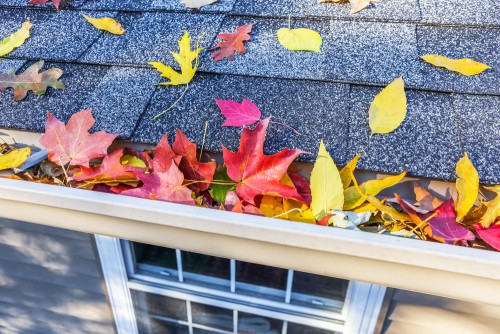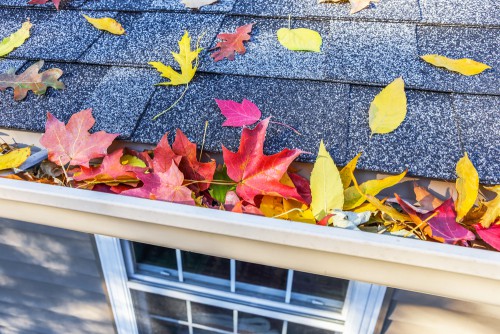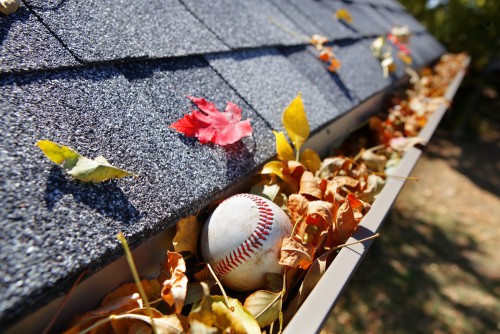Creating a Fall To-Do List? Don’t Forget About Gutter Cleaning

Fall has arrived, and for most homeowners that means it’s almost time to clean the gutters. Gutters are an essential part of a roofing system and are designed to keep buildings dry even during heavy rain or snow.
Without adequate gutters, however, a home’s roof, siding, and foundation are prone to water damage and other serious problems. Clogging is the most frequent issue when it comes to gutters, and roofing repair contractors should communicate to their clients the risks associated with blocked gutters.
How gutters become clogged
Gutters clog when loose debris decomposes and, if damp, gets matted to the gutter’s interior. If the debris becomes dense enough, it can prevent water from flowing toward the downspout, and then even the downspout can clog. Gutters should slope slightly toward the downspout, at an angle of about 1/8 or 1/16 of an inch per foot, to carry stormwater and snow away. But when gutters are blocked with leaves, ice, or other debris, the water has nowhere to go except over the edge of the gutter.
In late fall, gutters are prone to clogging from leaves and twigs. However, late spring or early summer is also an ideal time for contractors to offer gutter cleaning. Pollen, flower petals, and “helicopter”-like maple tree seeds are all common clog culprits.
While some parts of the United States, like the Southwest, won’t see as much debris from deciduous trees, homeowners in most areas need gutter cleaning about twice annually, according to Angie’s List. Even debris from coniferous trees can build up in the spring. Therefore, homeowners in heavily wooded areas especially may need to inspect and clean their gutters more than twice per year.
The trouble with clogged gutters
Gutter cleaning tends to be a fairly routine service that many roofing professionals offer. As an essential part of home maintenance, gutter cleaning prevents a number of issues, such as:
![i-may-be-cute]() Roof hazards
Roof hazards
With blocked gutters, water can seep into the spaces beneath the shingles and potentially rot the fascia boards and soffits. Roofing contractors performing site visits will typically look for dry rot on these parts as a way to spot leaks and other problems. Blocked gutters can pose a fire hazard in some cases. Much of the time, damaged gutters can open a home up to leaks and critter infestations.
Basement and foundation issues
When gutters become clogged, the water they should collect can pool near the home’s foundation instead. The excess water can crack the foundation, which, if left unchecked, can let water into the home’s basement. A damp basement can lead to the proliferation of mold and mildew, and a large enough leak could lead to flooding.
Home exterior damage
When gutters fail to drain properly, water and debris can spill over the side of the gutter. While it may not sound quite as dangerous as the above consequences, water and debris from the gutter can damage paint and siding, and there’s always the risk of mold or dry rot with enough dampness. Gutters overburdened with leaves and other debris will sag and pull away from the side of the house, making repairs a necessity.
When a simple gutter cleaning won’t do…
As roofing contractors inspect and repair roofs, they also advise their customers to perform regular preventative maintenance on their roofing systems. Gutters that aren’t regularly cleaned or that have suffered storm damage will, naturally, need far more than a cleaning.
When contractors deem repairs or replacements necessary, they need to have measurements for the roof to determine the length of gutter, fascia, soffit, or other material to repair or replace. Contractors often manually measure roofs, which can be a time-consuming process. To save time, contractors can also order gutter reports for a property, which include the total eave length, an estimated number of downspouts and the inside and outside miter count.
Gutter systems should last about 20 to 30 years with proper maintenance, so it’s best to catch small problems like blocked gutters early. Gutter maintenance and repairs should be on every homeowner’s and contractor’s autumn to-do list.



